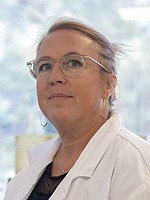Sensors, Actuators, and Responsive Materials
Session Chairs
Alba Marcellan (ESPCI & Sorbonne Université, Paris, France)
Brigitte Voit (Leibniz-Institute of Polymer Research, Dresden, Germany)
Invited Speakers

Jose Augusto Berrocal (ICIQ, Spain)
From Small Molecules to Mechanoresponsive Networks: Triarylmethane Mechanophores in Action (Shared talk with Elasticity and Fracture of Gels, Elastomers & Composites)
Understanding how small molecules respond to mechanical force is key to designing next-generation responsive materials. In this talk, I will present our recent work on triarylmethane-based mechanophores, focusing on their force-induced reactivity and integration into polymer networks. By linking molecular-scale insights to macroscopic behavior, we aim to develop mechanoresponsive polymers with tunable and predictable functionalities.

Celine Calvino (University of Freiburg, Germany)
Quinolinone-Gated Chemistry: A Versatile Platform for Recyclable and Stimuli-Responsive Polymers (shared talk with Vitrimers, Sustainable Materials, and Recycling)
Stimuli-responsive materials offer a promising pathway toward sustainable polymer systems through controlled property changes triggered by external inputs. Here, we introduce two complementary strategies for circularity: a quinolinone-based photoreversible bonding system enabling efficient, catalyst-free polymerization and depolymerization, and its integration into dynamic networks for light-induced crosslinking and thermal reprocessing. These approaches achieve high monomer recovery and reversible material transformation under mild conditions.

Stéphanie Descroix (Institute Curie, Paris, France)
Molding and actuating hydrogels for organ on chip development (shared talk with Bio-Medical Applications)
Organ on chip represents a next generation of in vitro biological models with a great potential in biology, biophysics and clinical application. In this context, mimicking the extracellular matrix composition, architecture as well as the forces experienced by the organ is crucial. In this talk, I will discuss how these different aspects can be implemented on chip to replicate in vivo conditions, and how they can be tuned to investigate their effects on the organ physiology.

David Mecerreyes Molero (POLYMAT, Donostia-San Sebastián, Spain)
Design of conductive eutectogels for bioelectronics (shared talk with Hydrogels & Ionogels)
In this talk we will show our recent works in the development of new Ionic gels for bioelectronic applications. The talk will include the previous developments of gels containing ionic liquids (iongels) and our actual work in gels containing eutectic solvents, eutectogels. The additive manufacturing 3D printing of the gels will be discussed together with its applications in bioelectronic devices such as bio electrodes or organic electrochemical transistors.

Luisa Torsi (University of Bari, Italy)
Plasmonic Single-Molecule Affinity Detection at 10-20 Molar
DNA can be readily amplified through replication, enabling the detection of a single- target copy. A comparable performance for proteins in immunoassays has yet to be fully assessed. Surface-plasmon-resonance (SPR) serves as a probe capable of performing assays at concentrations typically around 10-9 molar. In this study, plasmonic single-molecule assays for both proteins and DNA are demonstrated, achieving limits-of-detections (LODs) as low as 10-20 molar (1 ± 1 molecule in 0.1 mL), even in human serum, in 1 h. This represents an improvement in typical SPR LODs by eleven orders-of-magnitude. The single-molecule SPR assay is achieved with a millimeter-wide surface functionalized with a physisorbed biolayer comprising trillions of recognition-elements (antibodies or protein–probe complexes) which undergo an acidic or alkaline pH-conditioning. Potentiometric and surface-probing imaging experiments reveal the phenomenon underlying this extraordinary performance enhancement. The data suggest an unexplored amplification process within the biomaterial, where pH-conditioning, driving the biolayer in a metastable state, induces a self-propagating aggregation of partially misfolded proteins, following single-affinity binding. This process triggers an electrostatic rearrangement, resulting in the displacement of a charge equivalent to 1.5e per 102 recognition elements. Such findings open new opportunities for reliable SPR-based biosensing at the physical detection limits, with promising applications in point-of-care plasmonic systems.
Contributed talks and posters
... will be continuously added until the abstract acceptance deadline.